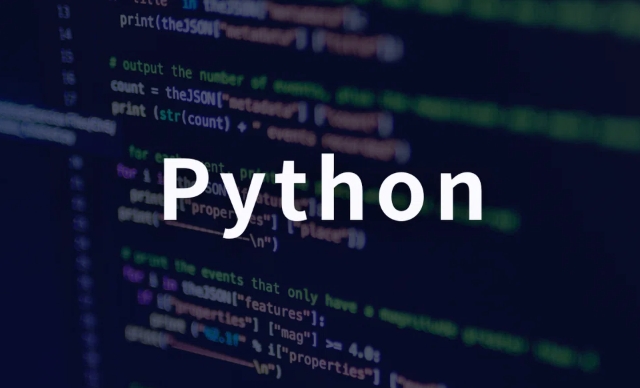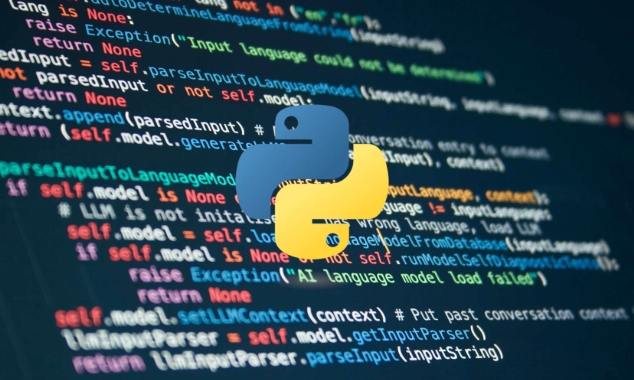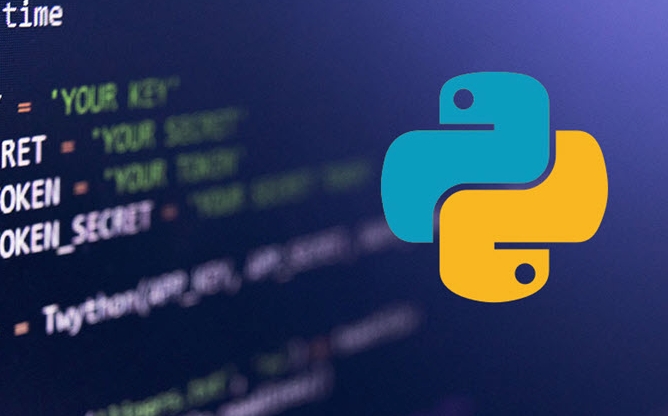How to scrape a website that requires a login with Python
Jul 10, 2025 pm 01:36 PMTo scrape a website that requires login using Python, simulate the login process and maintain the session. First, understand how the login works by inspecting the login flow in your browser's Developer Tools, noting the login URL, required parameters, and any tokens or redirects involved. Second, use requests.Session() to persist cookies across requests, sending a POST request with the correct login credentials and using the session object to access protected pages afterward. Third, handle dynamic logins—such as JavaScript-heavy sites—with tools like Selenium or Playwright for UI automation, which can also extract cookies post-login for further scraping. Fourth, avoid getting blocked or locked out by adding delays between requests, rotating user agents, avoiding brute-force attempts, respecting terms of service, and securely managing credentials via environment variables instead of hardcoding them.

If you want to scrape a website that requires login using Python, the key is to simulate the login process and maintain the session. Unlike public pages, logged-in content is protected by authentication, so you can’t just use requests.get(url) and expect to see the real data. You need to handle cookies or tokens properly.

Here’s how to approach it step by step.
1. Understand How the Login Works
Before writing any code, inspect the login flow in your browser:

- Open Developer Tools (F12), go to the Network tab.
- Try logging in manually and look for the request made to the login endpoint (
POSTusually). - Check the Form Data or Request Payload — this tells you what parameters are needed (like username, password, maybe CSRF token).
- Also check if there's a redirect after login or if tokens are involved (common with modern apps).
This gives you all the info you need to replicate the login in your script.
2. Use requests.Session() to Keep Cookies
Once you know the login URL and required data, use a session object to persist cookies across requests:

import requests
session = requests.Session()
login_data = {
'username': 'your_username',
'password': 'your_password'
}
login_url = 'https://example.com/login'
session.post(login_url, data=login_data)After this, session will carry the authenticated cookies, and you can use it to access protected pages:
profile_page = session.get('https://example.com/dashboard')
print(profile_page.text) # Should show the actual logged-in contentSome sites may require additional fields like
csrf_token, which you’ll have to extract from the login page HTML first using tools like BeautifulSoup or lxml.
3. Handle Dynamic Logins (e.g., JavaScript-heavy Sites)
If the site uses JavaScript heavily or has complex authentication (like OAuth, JWT tokens), requests might not be enough. In such cases:
- Use Selenium or Playwright to control a real browser.
- These tools can log in via UI automation and then retrieve the final page content or cookies.
Example with Selenium:
from selenium import webdriver
driver = webdriver.Chrome()
driver.get('https://example.com/login')
# Find and fill login form
driver.find_element('name', 'username').send_keys('your_username')
driver.find_element('name', 'password').send_keys('your_password')
driver.find_element('xpath', '//button[@type="submit"]').click()
# After login, get cookies
cookies = driver.get_cookies()
# Now use these cookies with requests or continue scraping via SeleniumKeep in mind: browser automation is slower and heavier than requests.
4. Avoid Getting Blocked or Locked Out
When scraping authenticated pages:
- Don't send too many requests in a short time — add delays with
time.sleep(). - Rotate user agents or use headers similar to real browsers.
- Be cautious with brute-force attempts — some sites lock accounts after multiple failed logins.
- Respect terms of service — scraping may be against the rules.
Also, never hardcode credentials in your scripts publicly — use environment variables or config files.
So to recap:
- Simulate login using
Session()and correct POST data. - Handle dynamic logins with browser automation if needed.
- Always keep sessions alive and mimic real user behavior.
That’s basically it — not rocket science, but easy to mess up if you skip the prep work.
The above is the detailed content of How to scrape a website that requires a login with Python. For more information, please follow other related articles on the PHP Chinese website!

Hot AI Tools

Undress AI Tool
Undress images for free

Undresser.AI Undress
AI-powered app for creating realistic nude photos

AI Clothes Remover
Online AI tool for removing clothes from photos.

Clothoff.io
AI clothes remover

Video Face Swap
Swap faces in any video effortlessly with our completely free AI face swap tool!

Hot Article

Hot Tools

Notepad++7.3.1
Easy-to-use and free code editor

SublimeText3 Chinese version
Chinese version, very easy to use

Zend Studio 13.0.1
Powerful PHP integrated development environment

Dreamweaver CS6
Visual web development tools

SublimeText3 Mac version
God-level code editing software (SublimeText3)
 PHP calls AI intelligent voice assistant PHP voice interaction system construction
Jul 25, 2025 pm 08:45 PM
PHP calls AI intelligent voice assistant PHP voice interaction system construction
Jul 25, 2025 pm 08:45 PM
User voice input is captured and sent to the PHP backend through the MediaRecorder API of the front-end JavaScript; 2. PHP saves the audio as a temporary file and calls STTAPI (such as Google or Baidu voice recognition) to convert it into text; 3. PHP sends the text to an AI service (such as OpenAIGPT) to obtain intelligent reply; 4. PHP then calls TTSAPI (such as Baidu or Google voice synthesis) to convert the reply to a voice file; 5. PHP streams the voice file back to the front-end to play, completing interaction. The entire process is dominated by PHP to ensure seamless connection between all links.
 How to use PHP combined with AI to achieve text error correction PHP syntax detection and optimization
Jul 25, 2025 pm 08:57 PM
How to use PHP combined with AI to achieve text error correction PHP syntax detection and optimization
Jul 25, 2025 pm 08:57 PM
To realize text error correction and syntax optimization with AI, you need to follow the following steps: 1. Select a suitable AI model or API, such as Baidu, Tencent API or open source NLP library; 2. Call the API through PHP's curl or Guzzle and process the return results; 3. Display error correction information in the application and allow users to choose whether to adopt it; 4. Use php-l and PHP_CodeSniffer for syntax detection and code optimization; 5. Continuously collect feedback and update the model or rules to improve the effect. When choosing AIAPI, focus on evaluating accuracy, response speed, price and support for PHP. Code optimization should follow PSR specifications, use cache reasonably, avoid circular queries, review code regularly, and use X
 python seaborn jointplot example
Jul 26, 2025 am 08:11 AM
python seaborn jointplot example
Jul 26, 2025 am 08:11 AM
Use Seaborn's jointplot to quickly visualize the relationship and distribution between two variables; 2. The basic scatter plot is implemented by sns.jointplot(data=tips,x="total_bill",y="tip",kind="scatter"), the center is a scatter plot, and the histogram is displayed on the upper and lower and right sides; 3. Add regression lines and density information to a kind="reg", and combine marginal_kws to set the edge plot style; 4. When the data volume is large, it is recommended to use "hex"
 PHP integrated AI emotional computing technology PHP user feedback intelligent analysis
Jul 25, 2025 pm 06:54 PM
PHP integrated AI emotional computing technology PHP user feedback intelligent analysis
Jul 25, 2025 pm 06:54 PM
To integrate AI sentiment computing technology into PHP applications, the core is to use cloud services AIAPI (such as Google, AWS, and Azure) for sentiment analysis, send text through HTTP requests and parse returned JSON results, and store emotional data into the database, thereby realizing automated processing and data insights of user feedback. The specific steps include: 1. Select a suitable AI sentiment analysis API, considering accuracy, cost, language support and integration complexity; 2. Use Guzzle or curl to send requests, store sentiment scores, labels, and intensity information; 3. Build a visual dashboard to support priority sorting, trend analysis, product iteration direction and user segmentation; 4. Respond to technical challenges, such as API call restrictions and numbers
 python list to string conversion example
Jul 26, 2025 am 08:00 AM
python list to string conversion example
Jul 26, 2025 am 08:00 AM
String lists can be merged with join() method, such as ''.join(words) to get "HelloworldfromPython"; 2. Number lists must be converted to strings with map(str, numbers) or [str(x)forxinnumbers] before joining; 3. Any type list can be directly converted to strings with brackets and quotes, suitable for debugging; 4. Custom formats can be implemented by generator expressions combined with join(), such as '|'.join(f"[{item}]"foriteminitems) output"[a]|[
 python connect to sql server pyodbc example
Jul 30, 2025 am 02:53 AM
python connect to sql server pyodbc example
Jul 30, 2025 am 02:53 AM
Install pyodbc: Use the pipinstallpyodbc command to install the library; 2. Connect SQLServer: Use the connection string containing DRIVER, SERVER, DATABASE, UID/PWD or Trusted_Connection through the pyodbc.connect() method, and support SQL authentication or Windows authentication respectively; 3. Check the installed driver: Run pyodbc.drivers() and filter the driver name containing 'SQLServer' to ensure that the correct driver name is used such as 'ODBCDriver17 for SQLServer'; 4. Key parameters of the connection string
 python pandas melt example
Jul 27, 2025 am 02:48 AM
python pandas melt example
Jul 27, 2025 am 02:48 AM
pandas.melt() is used to convert wide format data into long format. The answer is to define new column names by specifying id_vars retain the identification column, value_vars select the column to be melted, var_name and value_name, 1.id_vars='Name' means that the Name column remains unchanged, 2.value_vars=['Math','English','Science'] specifies the column to be melted, 3.var_name='Subject' sets the new column name of the original column name, 4.value_name='Score' sets the new column name of the original value, and finally generates three columns including Name, Subject and Score.
 Optimizing Python for Memory-Bound Operations
Jul 28, 2025 am 03:22 AM
Optimizing Python for Memory-Bound Operations
Jul 28, 2025 am 03:22 AM
Pythoncanbeoptimizedformemory-boundoperationsbyreducingoverheadthroughgenerators,efficientdatastructures,andmanagingobjectlifetimes.First,usegeneratorsinsteadofliststoprocesslargedatasetsoneitematatime,avoidingloadingeverythingintomemory.Second,choos






